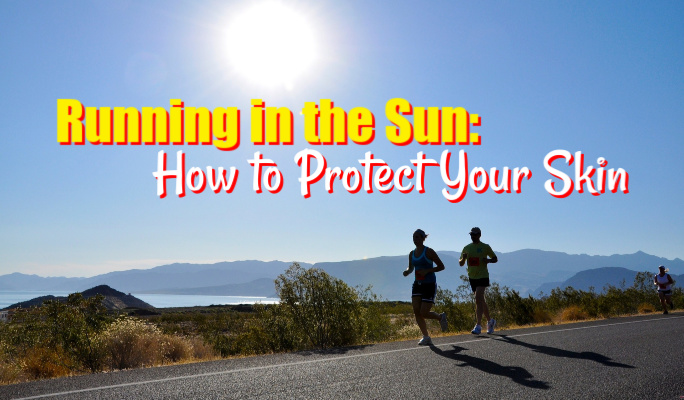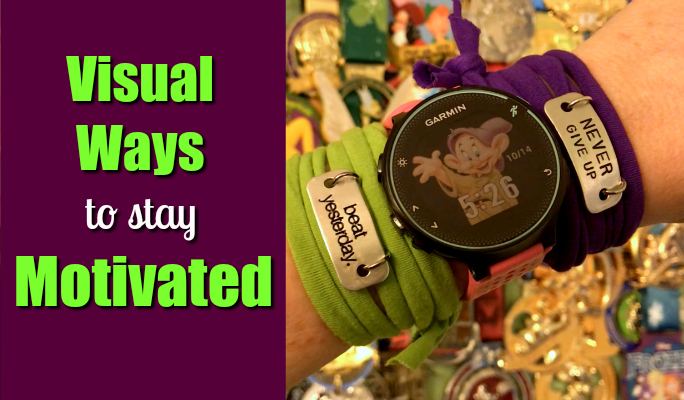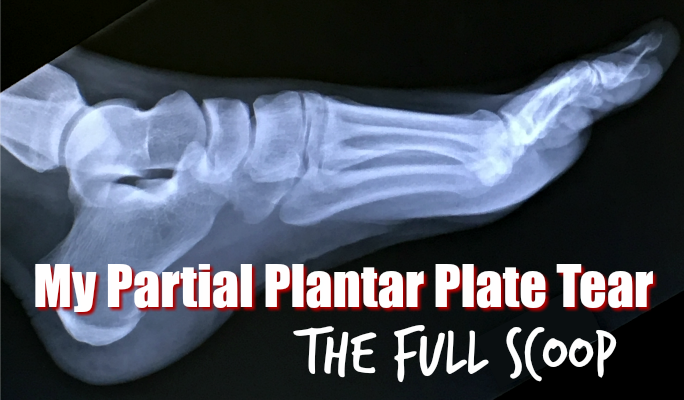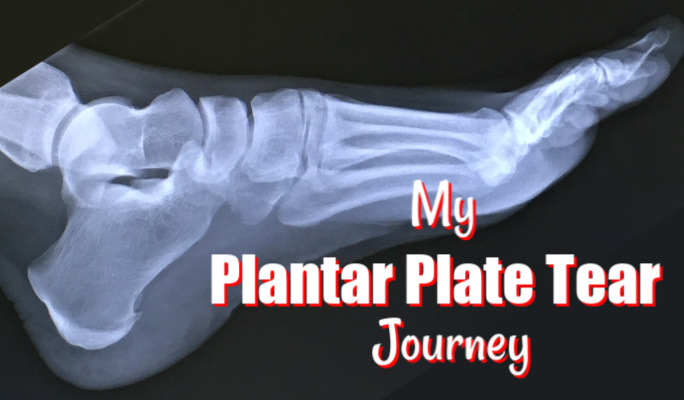Hallelujah, summer is here! I hope you’re enjoying some lovely runs in the sun … and that you’re protecting your skin. This is so important because skin cancer is the most common cancer in the United States. According to the American Academy of Dermatology, 1 out of 5 Americans will develop skin cancer during their lifetime and one person dies from melanoma, the deadliest form of skin cancer, every hour … not good stats, y’all!
So back in May, I did a video about my own experience with skin cancer, the differences between UVA/UVB rays and physical/chemical sunscreens as well as my favorite brands and other ways I protect my skin. For the full version, watch this video or hit the highlights below!

I am not a scientist, doctor, dermatologist or aesthetician. I’m just a gal who hates getting carcinomas burned off with liquid nitrogen … trust me, it hurts … so I’ve done lots of research.
Also, all Amazon links are affiliate ones. This does not cost you more but does give me a small commission to use toward Joyful Miles expenses.
Differences between UVA and UVB rays
Without a doubt, the best way is to protect your skin from the sun is to use sunscreen on all exposed skin every single time you run, regardless of the time of year or time of day, even when it’s cloudy. To better explain why, let’s chat about ultraviolet rays.
The sun emits two different types of ultraviolet rays that affect your skin: UVA and UVB, both of which are harmful but in different ways.
UVB Rays
UVB rays are short wave ultraviolet rays that affect the top layer of your skin, the epidermis, and play a key role in the development of most forms of skin cancer. These are the rays that burn your skin and where you get your Vitamin D from. Intensity does vary by season, location and time of day with 10:00 am to 4:00 pm being the peak hours, depending on altitude and how close you live to the equator. This is why a common suggestion is to run early in the morning or later in the evening, when the burning rays aren’t the strongest.
The key word here is strongest. If you can see the sun, the sun can see you. So if you’re running at 7:00 am when UVB burning rays aren’t as strong, they are still reaching the earth so you need to wear sunscreen. Especially since there’s also UVA rays to worry about.
UVA Rays
UVA rays are long wave ultraviolet rays that prematurely age your skin. (Remember UVB – burning, UVA – aging.) They penetrate deep into your dermis, skin’s thickest layer, causing premature wrinkles, hyper pigmentation or sun spots, and can cause the most dangerous forms of cancer. Unlike UVB rays that are filtered by glass, UVA rays can penetrate through glass, windows, and clouds plus they are strong year round, regardless of time of day or season.
So if you’re going for a run on a cloudy winter day or in your vehicle with bare arms, you’re still damaging your skin. Something I’ve heard quite often is, “The sun’s not out! You don’t need sunscreen.” But nope, that sun is a powerful thing, y’all. Some clouds ain’t gonna get in its way and in fact, you can burn even worse because you don’t feel the heat on your skin and not thinking about the sun.
UVA rays not only come through windows, they also bounce off of shiny surfaces, so if you spend your days in an office working near windows, you skin can be damaged. It’s also important to know that concrete, water, snow, and sand can reflect UV rays. So if you’re by a pool or at the beach under an umbrella, you must still reapply sunscreen every 80 minutes or after swimming because sand reflects up to 17 percent of UV radiation.
Differences between Physical and Chemical Sunscreens
But now the big question is … what kind of sunscreen, physical or chemical? Oh boy, this could be a long conversation. Let’s go over the differences first.
Physical Sunscreens
A physical or mineral sunscreen is made from minerals such as zinc oxide or titanium dioxide which deflects UV rays away from the skin. They physically stay on top of the skin as a protective layer, working like a shield that blocks and scatters UV radiation before it can penetrate.
There are both pros and cons for using a physical sunscreen:
The Pros:
- They are broad spectrum, blocking both UVA and UVB rays. Take note that Zinc oxide offers the best UVA/UVB balance.
- They work as soon as they’re applied to the skin so there’s no wait time.
- They don’t irritate, making it a better choice for those with sensitive skin.
- They last longer when in direct UV light.
- They don’t clog your pores.
- They have a longer shelf life.
- Non-nanoparticle mineral sunscreens also are better for ocean ecosystems. “Non-nano” means the ingredient particles are above 100 nanometers in size, leaving corals untouched since they cannot be ingested.
There are also some cons, however:
- Depending on quality, they can be harder to rub in and to wash off. (Using an oil-based makeup remover such as Clinique Take the Day Off can help.)
- They rub off more easily and can rub off on your clothes or car seats.
- They are less sweat-resistant.
- Because they are a physical layer, they do leave a white or grey cast.
- Sunscreens with high levels of titanium dioxide are harmful to sea life since some studies has shown it reacts in warm seawater to form hydrogen peroxide. Titanium dioxide also doesn’t block all UVA rays, so it’s not as broad spectrum as zinc oxide.
- Many brands don’t work great under makeup. For ones that do, check out Hot and Flashy’s yearly review video where she tests several brands. (And by the way, if you are a mature woman looking to improve your skin, then you definitely want to check out her channel.)
Chemical Sunscreens
A chemical sunscreen has ingredients that penetrate the top layers of your skin, absorbing UV radiation and then converting them to heat, which is later released from the body. (Mind blowing, right???) Like mineral sunscreens, they also come with many pros and cons.
Pros:
- They are easier to rub in and wash off.
- They don’t leave a white or gray cast on your skin or any streaking.
- They are more resistant to sweat or water, making them better for long periods of physical activity.
Here’s the cons:
- You must wait at least 15 to 20 minutes before they’re effective.
- They can irritate sensitive skin, clog pores, and also drip through sweat into your eyes, causing stinging and irritation.
- Some ingredients such as oxybenzone can be hazardous to your health. (In fact, the FDA just came out with a warning saying that some chemicals can be absorbed into your bloodstream. There’s no evidence in this study that there is any health risk so further testing needs to be done but it’s sometime to think about.)
- Their protection levels begin to drop when in direct UV light and require frequent applications.
- Certain chemicals can also damage the oceanic ecosystem. In fact, Hawaii passed a bill that will prevent the sale of sunscreen containing ingredients that have been linked to coral bleaching such as oxybenzone and octinoxate. The new law goes into effect on January 1, 2021 and more cities and states will be taking similar action, like Key West, where officials also voted to ban harmful ingredients.
So which is the best, physical or chemical?
During my last yearly skin exam, I asked my dermatologist this question. Because I am high risk for skin cancer, he recommends a physical sunscreen for me. However, he also said that as long as someone uses a broad-spectrum, water resistant sunscreen with an SPF 30 or higher and uses it religiously, then he’s happy. He also says it depends on the activity. For a sweaty long run, a chemical sunscreen could be a better choice because it’s more sweat resistant.
As for me, I have an arsenal of sunscreens and I’m constantly researching new brands as well as evaluating favorites and discontinuing use if necessary.
One place I go to when researching a product is the Environmental Working Group or EWG, which is a non-profit organization that researches and advocates a healthier living. They have an app called Healthy Living where you can input or scan a sunscreen and find out how they rate it for health concerns and UVA/UVB Balance, plus their overall 1 to 10 score, with 1 being the best.
The EWG does come with some controversy, however, regarding funding sources, questionable studies, etc. Also, the app isn’t always up to date with newer products or it might show results for older formulas. So while much of their information is helpful, I don’t use it as the gospel. Instead, I use it as a jumping off point to do my own research.
For example, there’s a lot of debate over retinyl palmitate, which is a form of Vitamin A and an ingredient in my favorite brush-on mineral sunscreen. The EWG says it’s harmful, especially for pregnant women. It is approved by the FDA (for now, at least,) and the American Academy of Dermatology deems it as not harmful to your health so for now, I chose to still use this. But this shows why it’s important for you to do your own research and speak to your doctor.
And while we’re going there, don’t take my video, this post or other blogs and video as gospel either. I try my best to give accurate information but there’s so many opinions plus, you never know, a study could come out tomorrow showing how Retinyl Palmitate is the worst thing ever! So always do your research before deciding what to put on your body.
My Favorite Sunscreens
So with that, let’s chat about my favorite sunscreen and what I put on my body!
For training runs, I mostly opt for a physical sunscreen, especially on my face and chest, since Retin-A makes my skin sensitive and chemicals irritate my eyes. I’ve tested many brands and my favorite is ThinkSport which is 20% Zinc Oxide and non-nano so it offers great protection for both UVA and UVB rays plus it has a 1 rating on EWG.
While it does take more effort than a chemical brand, it does rub in quite nicely and most of the white cast fades after around fifteen minutes. It is also water-resistant for up to 80 minutes and is reef-friendly. At $21.00 for a six ounce bottle, it is a little pricey, but considering all the money I spend on skin care products, it’s worth it.
Neutrogena’s Pure & Baby is also super protective … but has the consistency of Elmer’s Glue and takes longer to rub in. The white cast doesn’t fade as much and it really rubs off on clothing, so I mostly use this on my legs during home training runs in order to make my ThinkSport last longer.
There’s so many new products I want to test throughout the summer. I’ll be sure to leave my thoughts on our blog, link is in the description box, or you can visit our Amazon Storefront that shows our must-have products for sun protection, running, lifestyle, and our favorite books!

For races or long runs over 80 minutes, I do use a chemical sunscreen since it has no white cast, doesn’t rub off on my clothes, and tends to last longer. A classic fav is Coppertone 30 or 50 that has a 4 rating on EWG and is oxybenzone free. (3 is the lowest they’ll rate a chemical sunscreen.)
A new favorite is Ocean Potion Sport 50, which is oxybenzone free with no added parabens, and is reef-friendly. This is non-greasy and has menthol, giving it a cooling effect plus no animal testing and it smells nice! I did check the reviews on Amazon and there are reports of users breaking out in hives, but I’ve had no issues, even when using it on my face.
When I’ll be outdoors all day, like when Bob and I biked the Great Allegheny Passage, I do re-apply with a spray. This does pose more of a health hazard, so I’m always careful to apply this outside and not breath in the fumes.
My favorite is Banana Boat Simply Protect Sport with an SPF50+ and 25% fewer ingredients and no oxybenzone and parabens. We did over 300 hundred miles and I had zero tans lines thanks to this stuff!
Banana Boat Simply Protect Sport is also recognized on the Hawaii.com website as being reef-safe, and it seems to me that the Baby and Kids version are as well. So if you do use a spray, this is a great product for the beach.
While cycling or running long distances, I also use a stick on my hands, such as NO-AD Sport Sun Care or Neutrogena Pure & Free Baby which are both easy to apply.
For non-sporting activities, my Holy Grail chemical sunscreen is Sun Bum SPF50, which is reef-friendly and contains less harmful ingredients. It rubs in quickly, doesn’t feel greasy, is very moisturizing plus it doesn’t rub off on my clothing.
For days when I’m indoors all day, like during the winter, and I want protection from any UVA rays coming through windows, I use Australian Gold Tinted Mineral 50 which one that Angie over at Hot & Flashy recommends, although this is rather drying on my dry skin. (I wouldn’t use for outdoors for long periods of time, however.)
As discussed before, I also love this Mineral Fusion Brush-On Sun Defense that has is 17.3% titanium dioxide, 20% zinc oxide and is non-nano. I keep a tube in my purse for when I’m makeup-free but have to run a errand in town. It doesn’t give the same coverage as foundation, but does even out my skin tone and give it some color. The titanium dioxide can possibly be carcinogenic when inhaled, however, so I apply it outside while holding my breath.
This is also great for applying sunscreen over makeup and I keep a tube in my gEar back at runDisney races, so I can reapply after the race. I wouldn’t depend on this as my only sunscreen, however. I always wear this over a sunscreen and it works great over mineral ones as well.
How Much to Use
Another important aspect is how much you apply and how often. The recommended amount for adults with an average built to use on their entire body is one ounce, a shot glass full. So this means that if you are of average built, (don’t ask me what that is because I don’t know,) and you run in just shorts or sports bra, then you need to be going through a 7-ounce bottle approximately every seven runs.
Yeah. Lotta sunscreen there.
A good way to test if you’re putting on enough is to squeeze out an estimate of what you use on your entire body into a shot glass with a one-ounce line. If you’re short, then fill to the line and then apply the sunscreen evenly so you’ll have a better feel for what is correct.
Fabrics matter!
The clothing you wear is also an important consideration. Darker, brighter clothing in blacks, reds, etc., absorb more rays as compared to white or pastel shades. Color, with darker, brighter colors such as black, reds, etc., absorbing more rays as compared to white or pastel shades. For example, a white cotton tee-shirt only offers a UPF of around 5.
Heavier fabrics with a tighter weave such as polyester, rayon, and other synthetic material also block out more rays as compared to lighter fabrics such as cotton, silk, or chiffon. Wearing looser clothing instead of skin-tight, stretched fabrics also offer more protection because the fibers aren’t stretched.
Considering these factors, I don’t apply sunscreen under running shorts, sports bras, or thick compression socks. A thin tank top that you can see through when held up to the light offers little to no protection, however, especially when wet with sweat. So you still need to apply sunscreen on your chest, stomach, and back.
Now let’s move on to some other ways you can protect your skin while outdoors.
Wear a Visor or Hat
A visor or a hat with a wide, broad brim will help shield some sun off your face, plus it also absorbs sweat from your forehead, causing less sunscreen from dripping into your eyes and causing irritation. If you do have a side part or bare spots, however, make sure you apply sunblock to exposed areas and on the tips of your ears, too!
Cooling Rags and Gaiters
For super long runs, I’ve also been known to wear a UV protecting gaiter up around my neck and head. I might look silly to others, but for those of us who use Retin-A or other acid-based anti-aging skincare … if you’re not being super careful, you’ll not only take away any progress you’ve made, you’ll also cause more damage.
Because my upper chest seems to take the brunt of damage, another trick of mine is to tuck a cooling rag underneath my tank top straps or shirt collar.
UV Protective Clothing
Regardless of whether I use chemical or physical sunscreen, it always streaks and rubs off at my bent elbows from sweat. So I wear UV protective arm sleeves or long-sleeve shirts made from cooling fabrics which not only protecting your skin but makes hot runs more comfortable. I still wear sunscreen under them, however, just in case I decide to join the Sports Bra Squad mid run by taking off my shirt and for extra protection.
Take note that some UV protecting garments have special washing instructions in order for them to work properly. The makers of my favorite long sleeve recommends hand washing in just water …. ewwww … so I’ve bought two for the summer, one for running and one for while gardening, walking along the beach, etc.
UV Protective Sunglasses
Not only to quality sunglass make your more comfortable and protect your eyes, they also help to protect the sensitive skin around your eyes.
For Other Non-Running Outdoor Activities
Before closing up this (very long) post, I want to share some other products that I use to protect my skin.
This Hat from Amazon is the absolute BOMB! The wide 5” brim helps to protect my skin while kayaking and the inner cord can be tightened to keep it from blowing off in strong winds. It’s also easy to wash … I just rinse it in cool water in the tub and then hang to dry.
One of our ABSOLUTE FAVORITE PRODUCTS and something we’ve been using for at least seventeen years is the Joe Shade Umbrella with a 50 UPF. Ours has been to countless baseball games, tennis matches, softball tournaments, horse shows, parades, picnics and more. It’s super easy to set up and comes with stakes in case it’s windy. Well worth the price!
I’m also loving my new UV-Blocker Umbrella that I will use often this summer, like while walking along the beach or boardwalk. Not only does this protect your skin, but it also offers a cooling effect, making it feel 10 degrees cooler.
While in my Jeep, I also love these Sun Gloves with a 50 UPF. My kids tease me about them, but I’ve already established that I don’t care what I look like, as long as I’m protected.
And as mentioned before, I’m a big fan of these Athletic Rashguards!
I also love arm sleeves … here’s one of my favorites:
As well as some different rashguards for swimming or kayaking … either these crew necks or zip ups!
Whew!
So there you have it, everything I know about protecting your skin while running and my many favorite products. I hope this was helpful and that you stay safe during your runs this summer … and year round!
Take care and have a joyful day!

































Great article as I am perpetually running in the mid day sun. Which sunscreen do you wear for long runs for your face? I re-read this again today but didn’t catch the answer. I currently use Otter Sport 35 but have no way to re-apply it really during 2 hours plus on the road.
I’ve been sticking with ThinkSport for my face for runs shorter than 80 minutes, but if it’s a longer run, I do use a chemical like Ocean Potion Sport 50 or Coppertone 50 and then reapply with a stick sunscreen or a spray. Gaitors that cover most of your face such as Buff UV Coolnet and a visor with a big brim can also help!
Great article. For me, running either super early in the morning or at night seems to do the trick for me.
Thank you so much for your insight